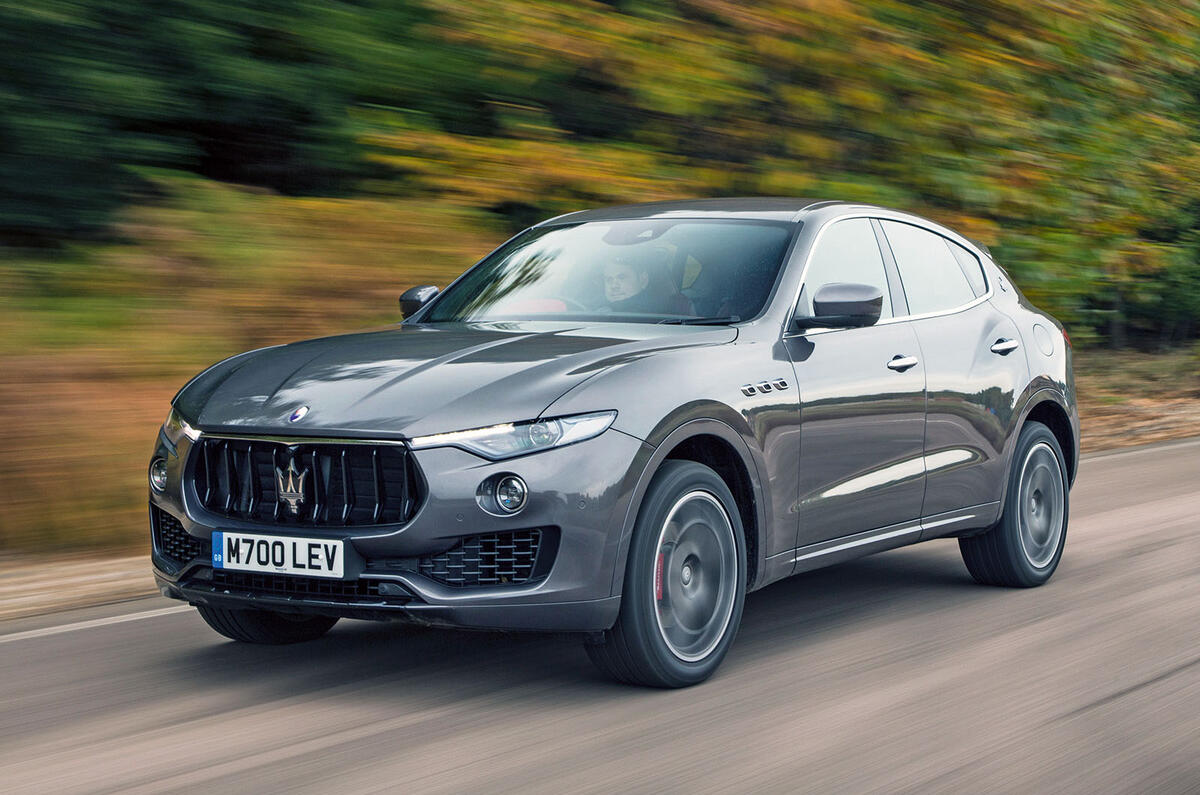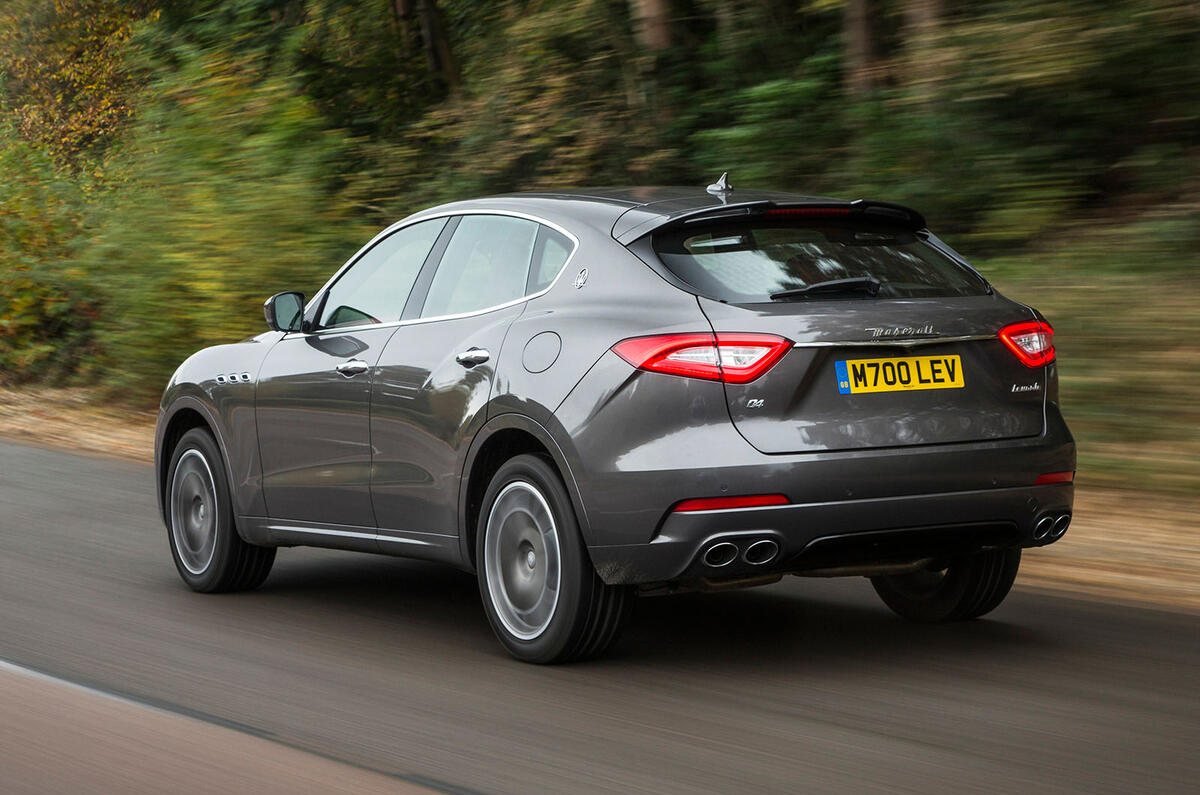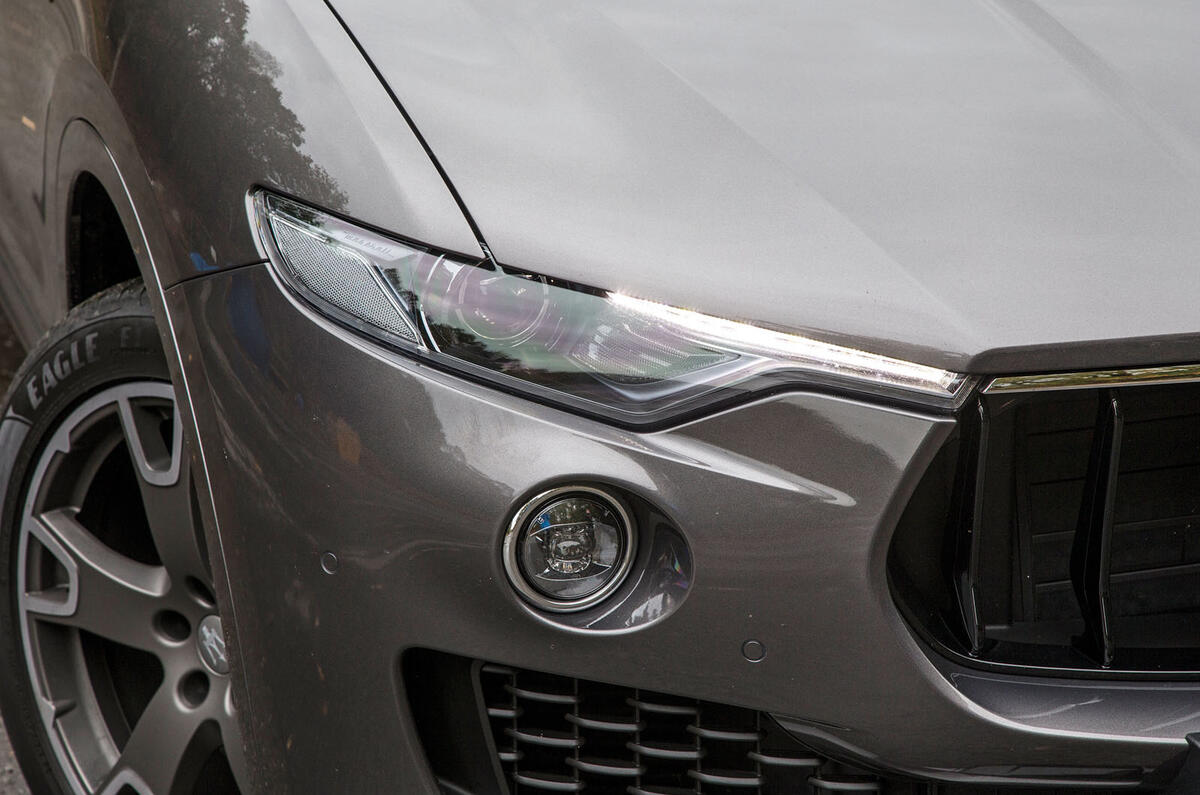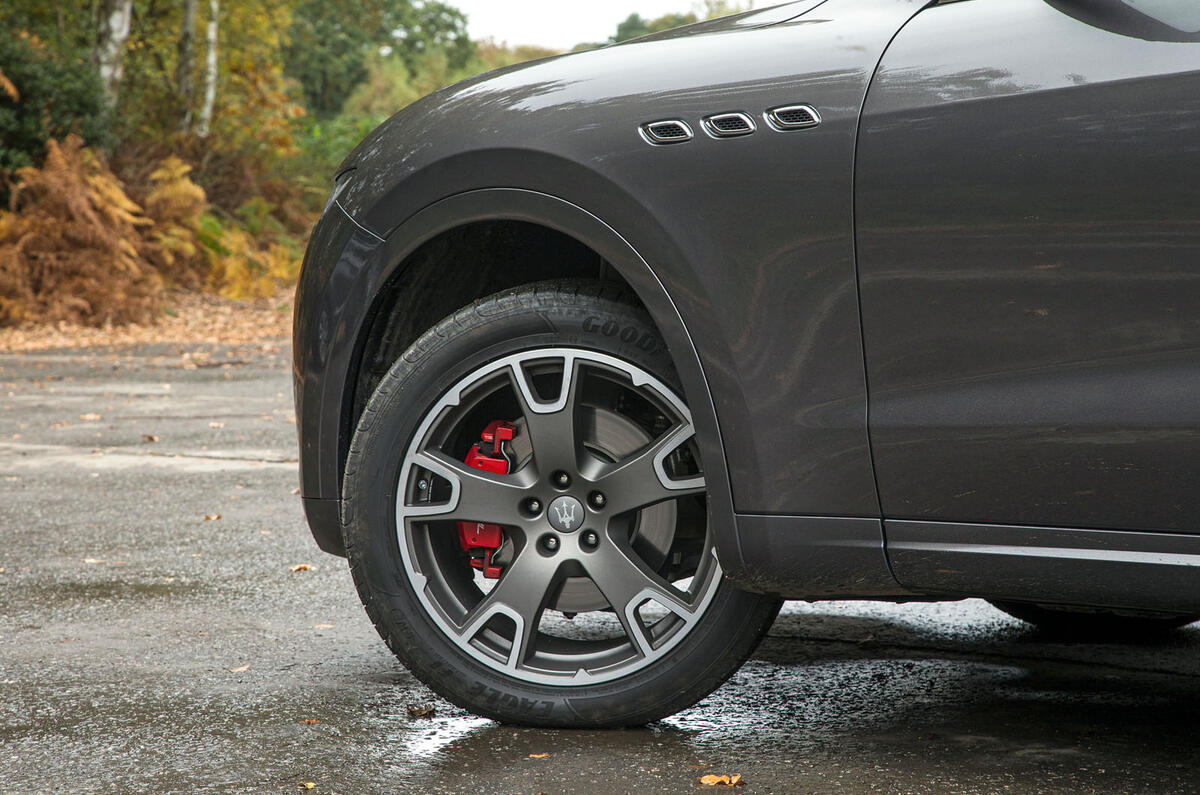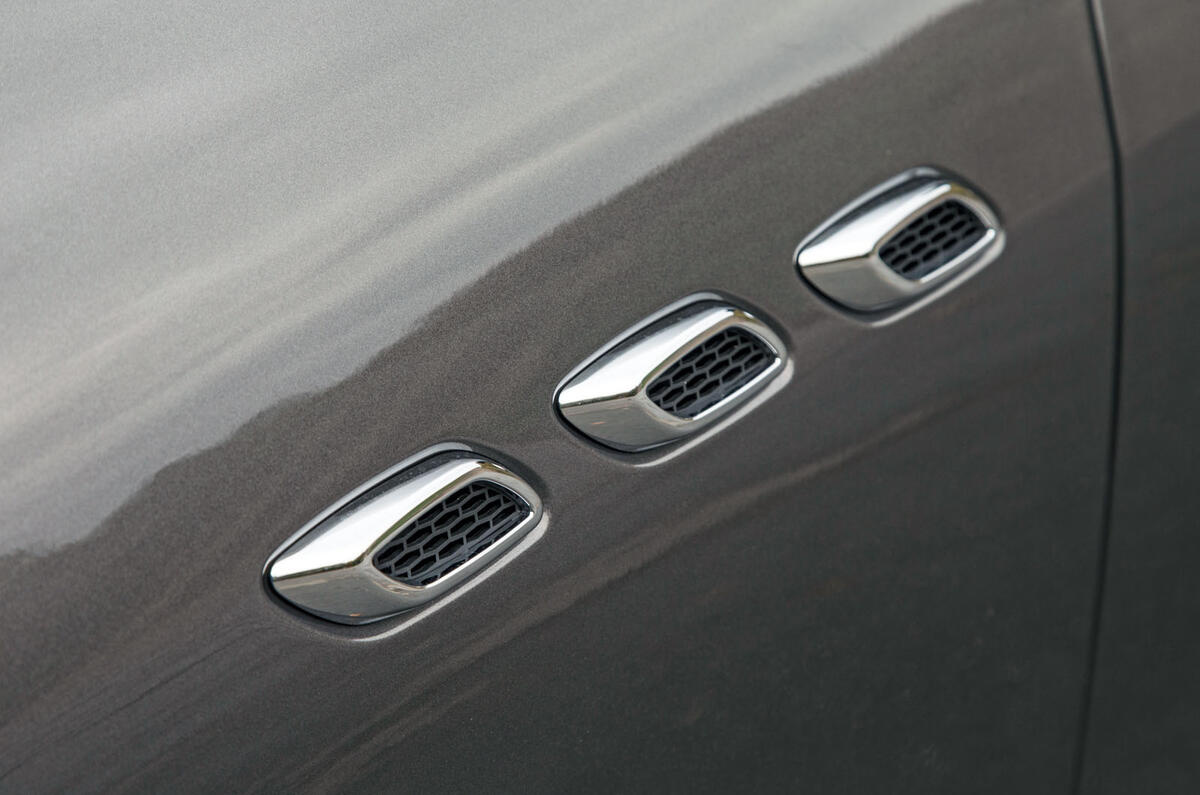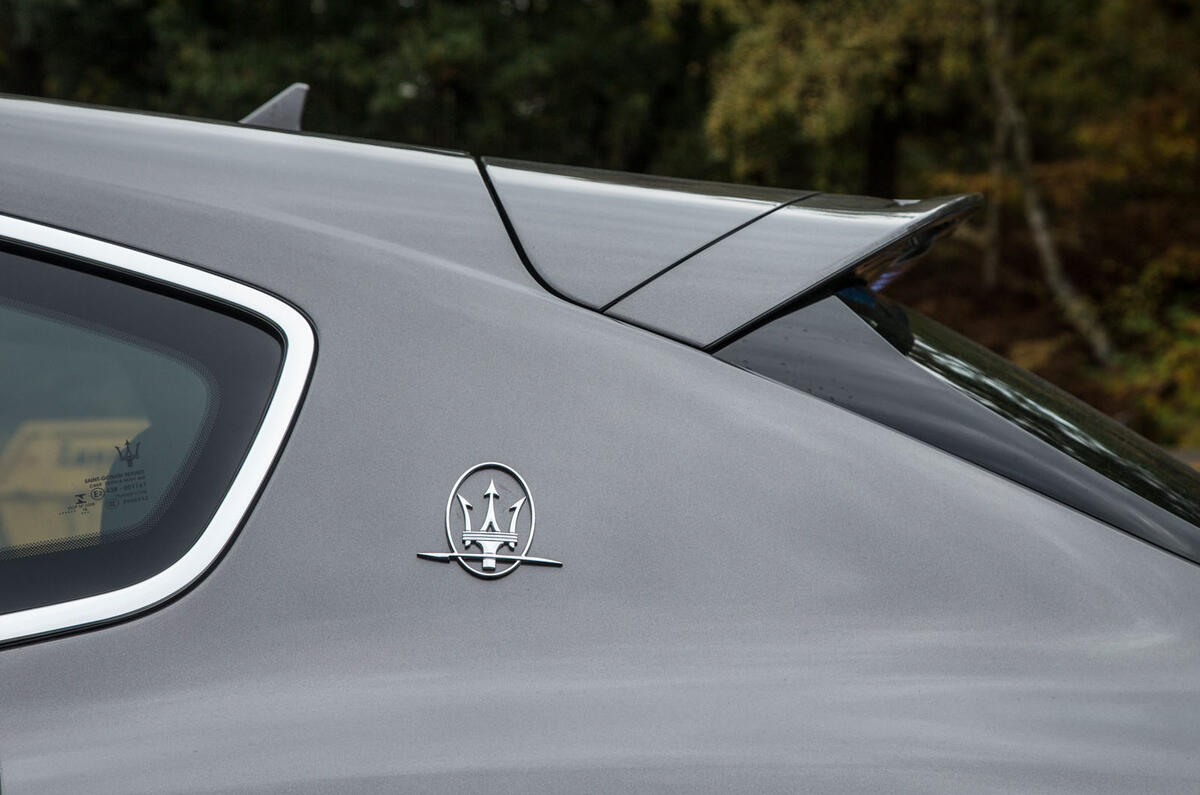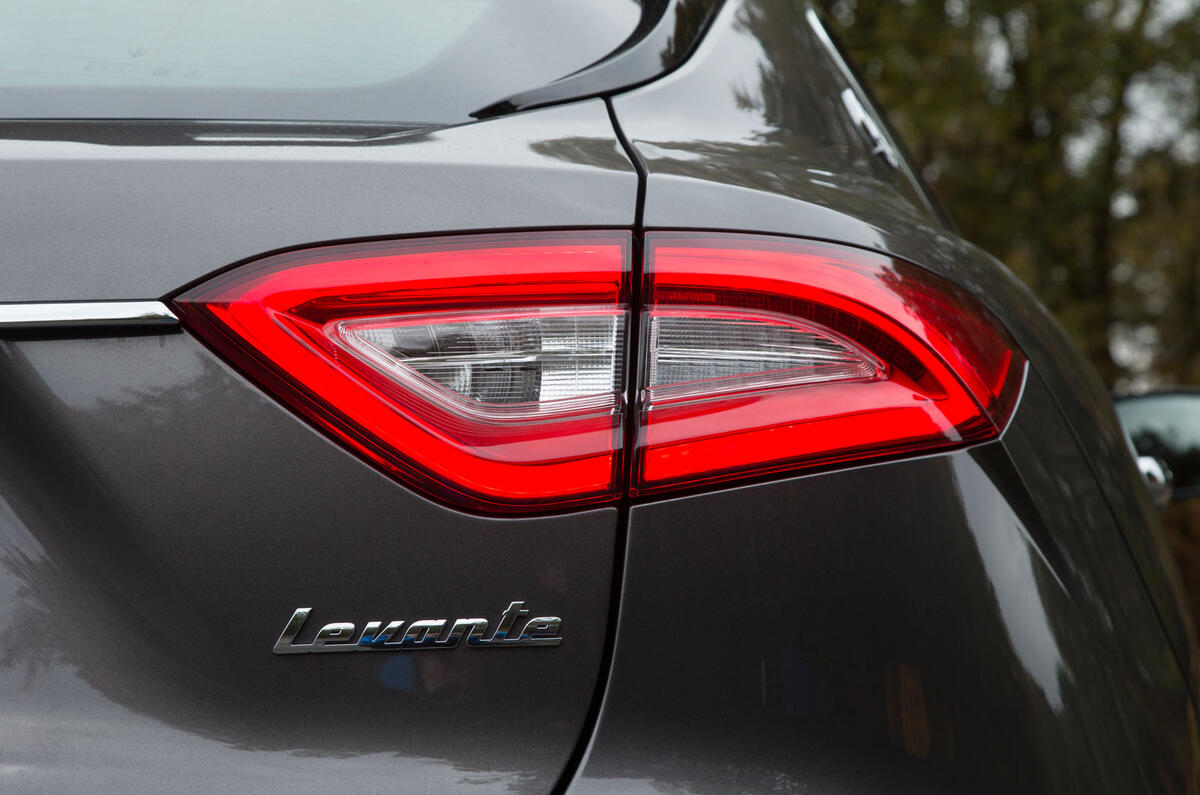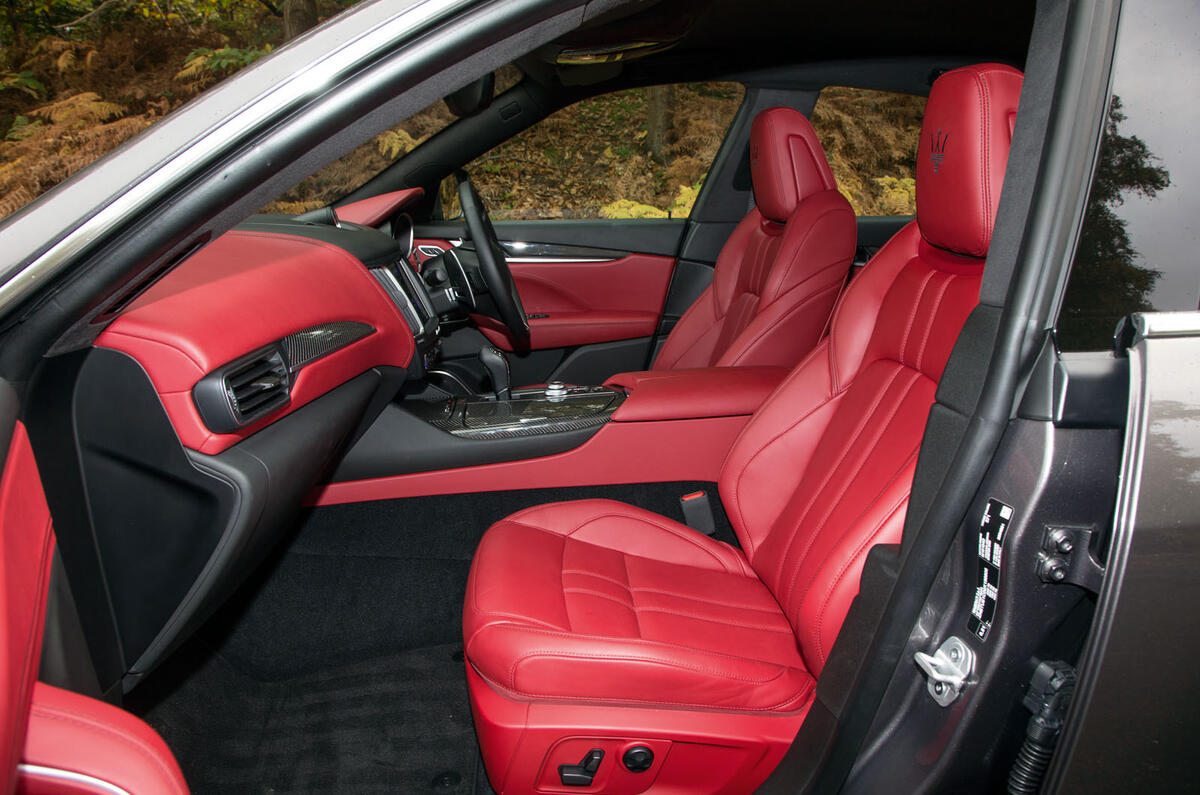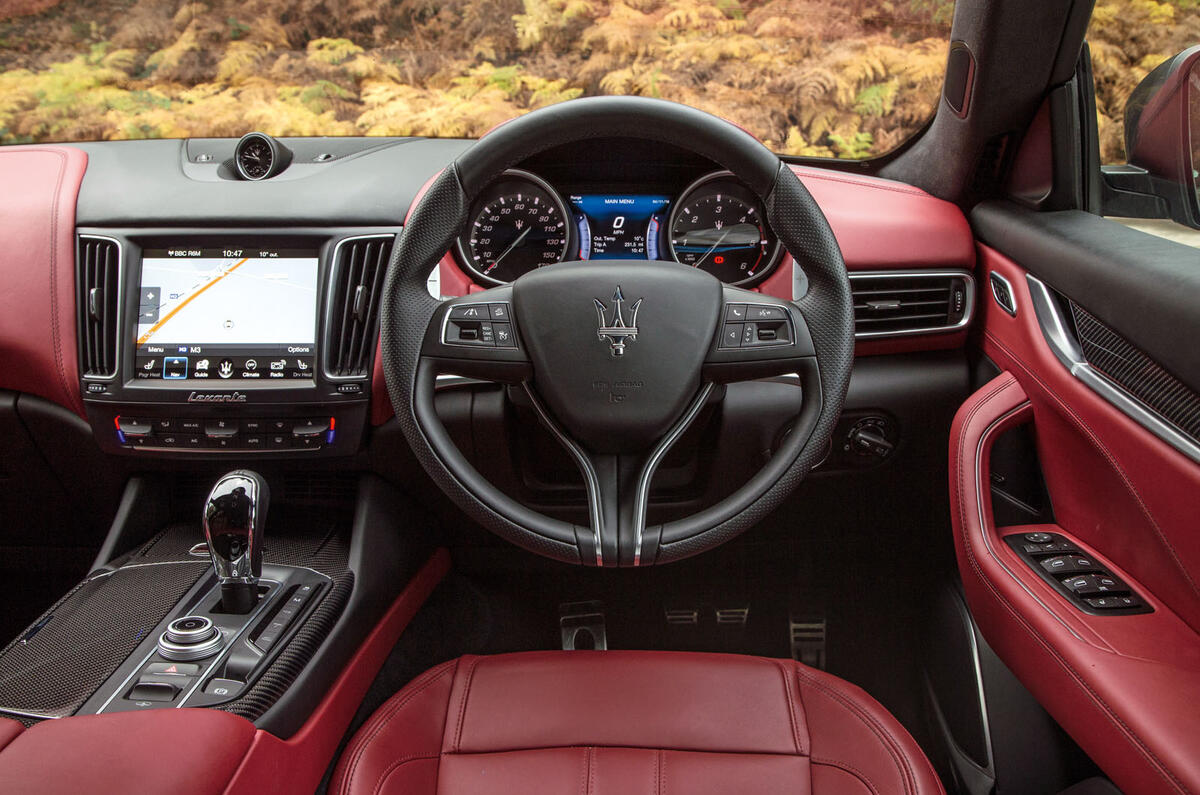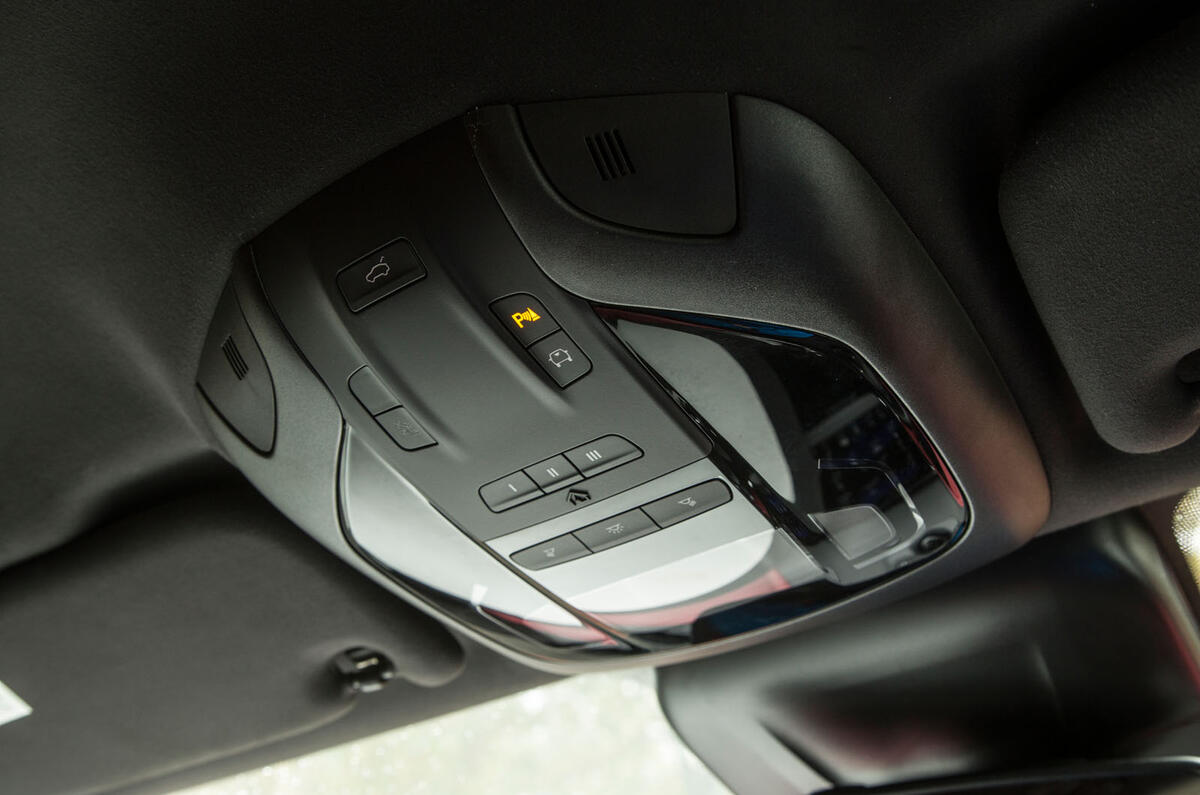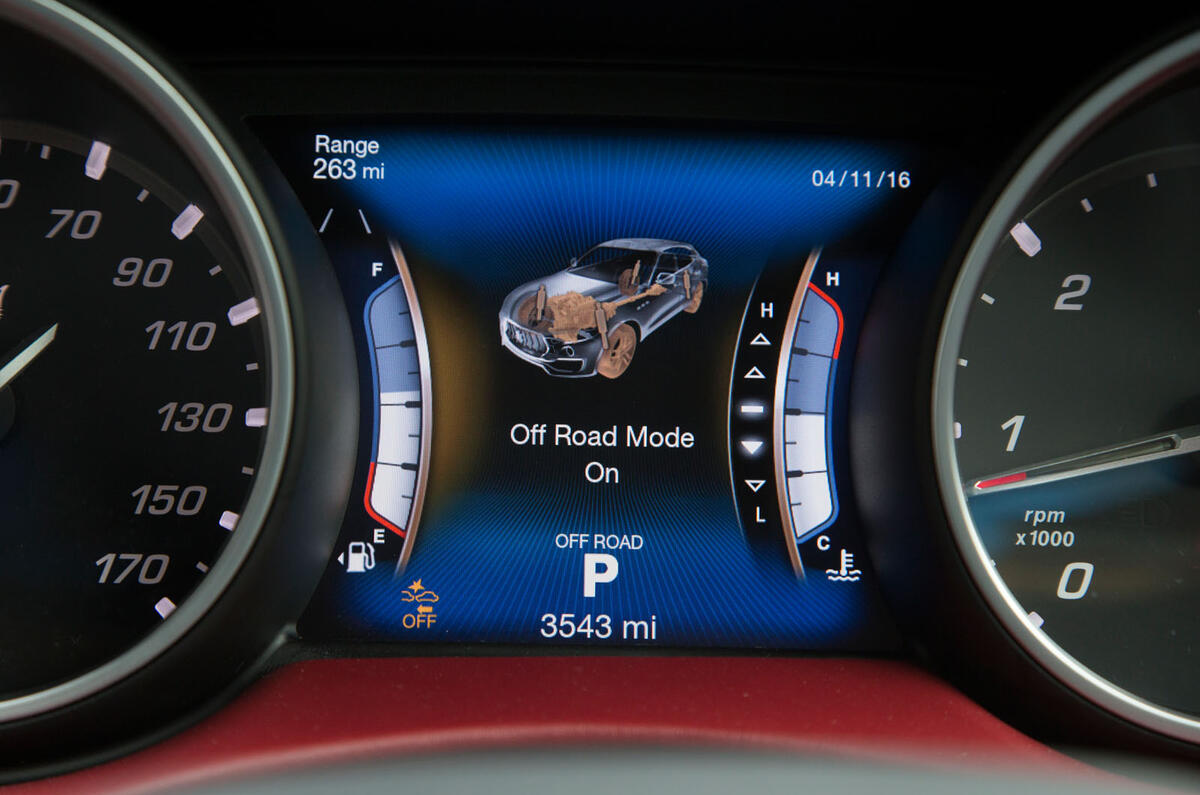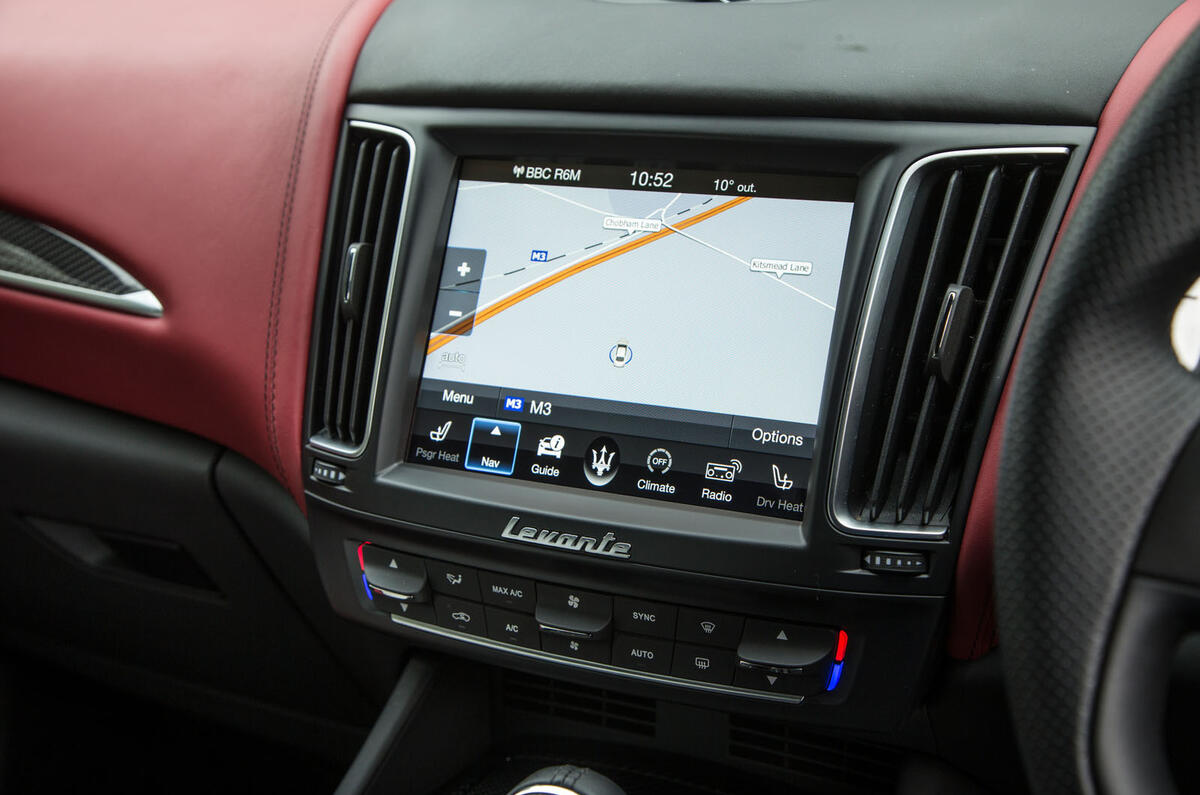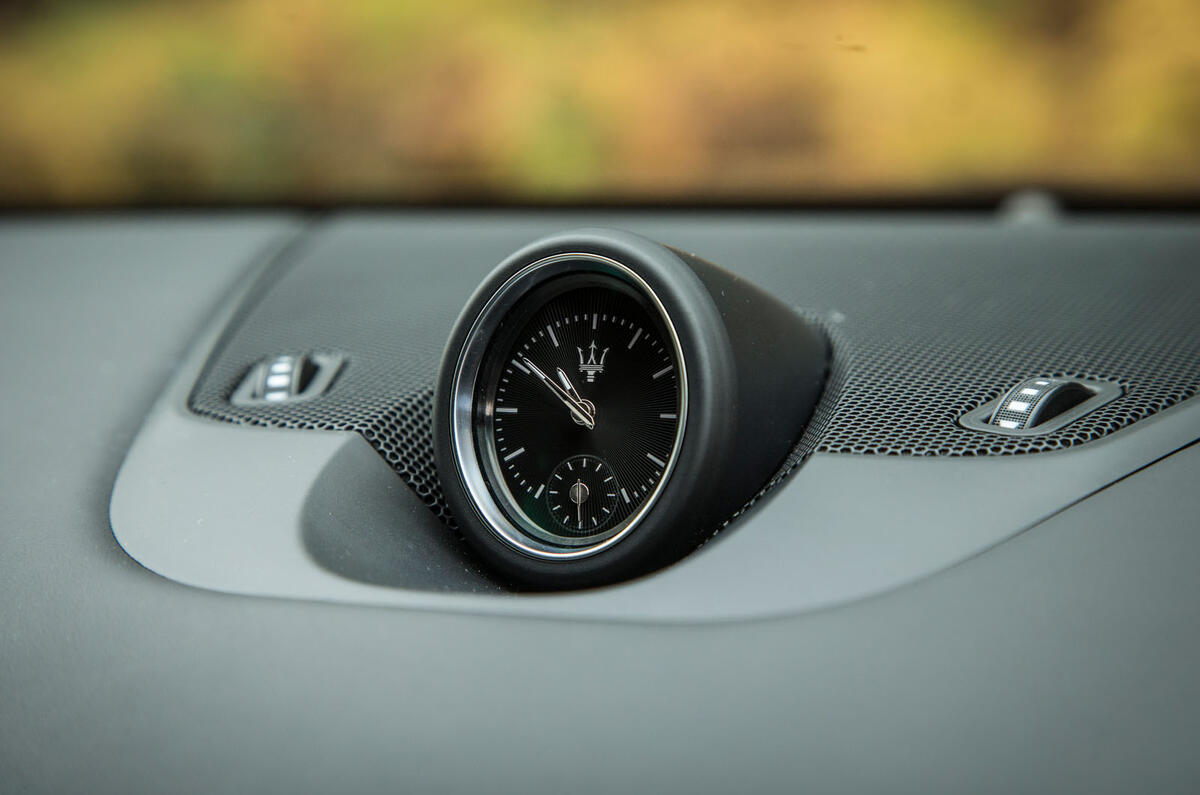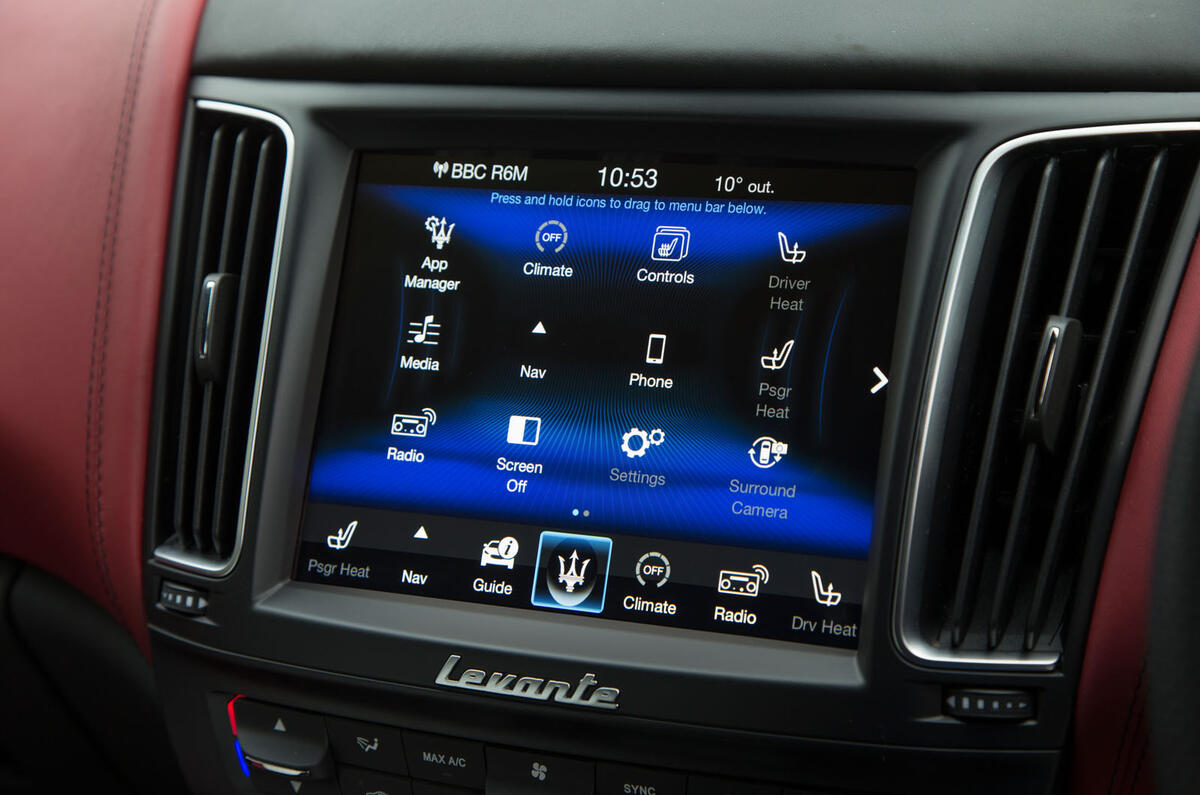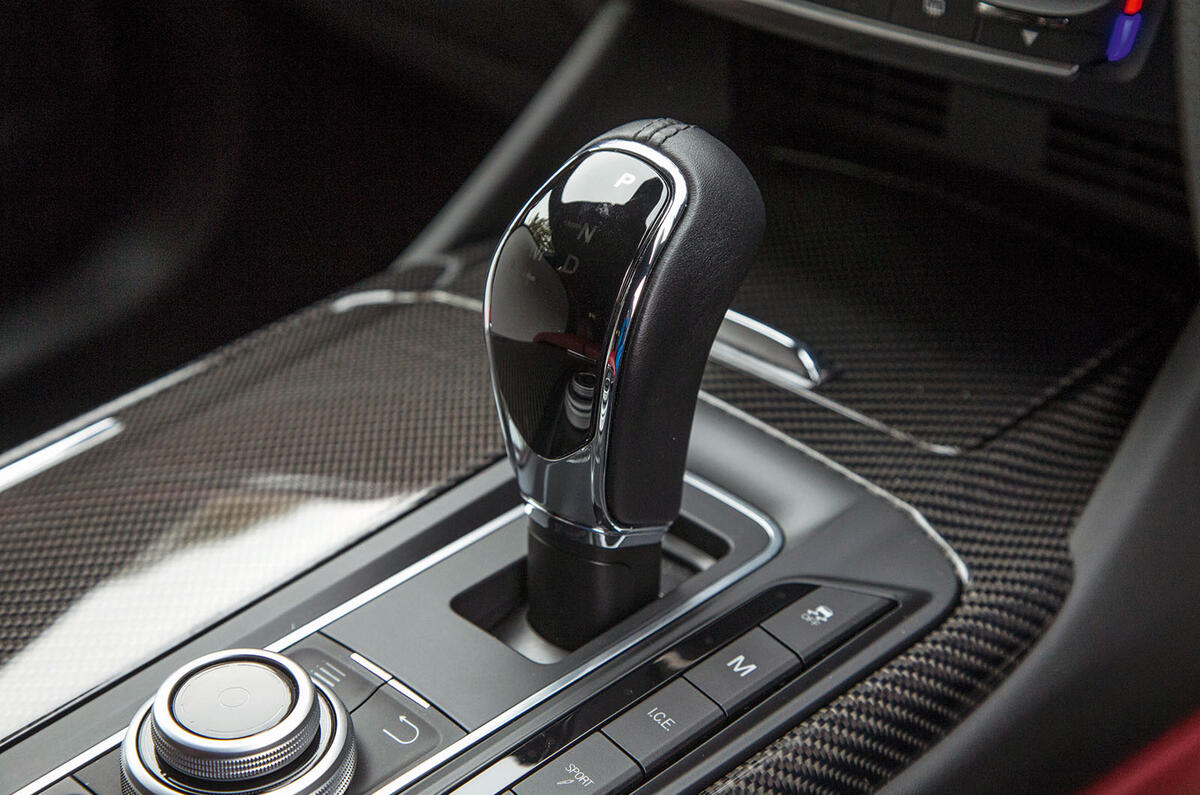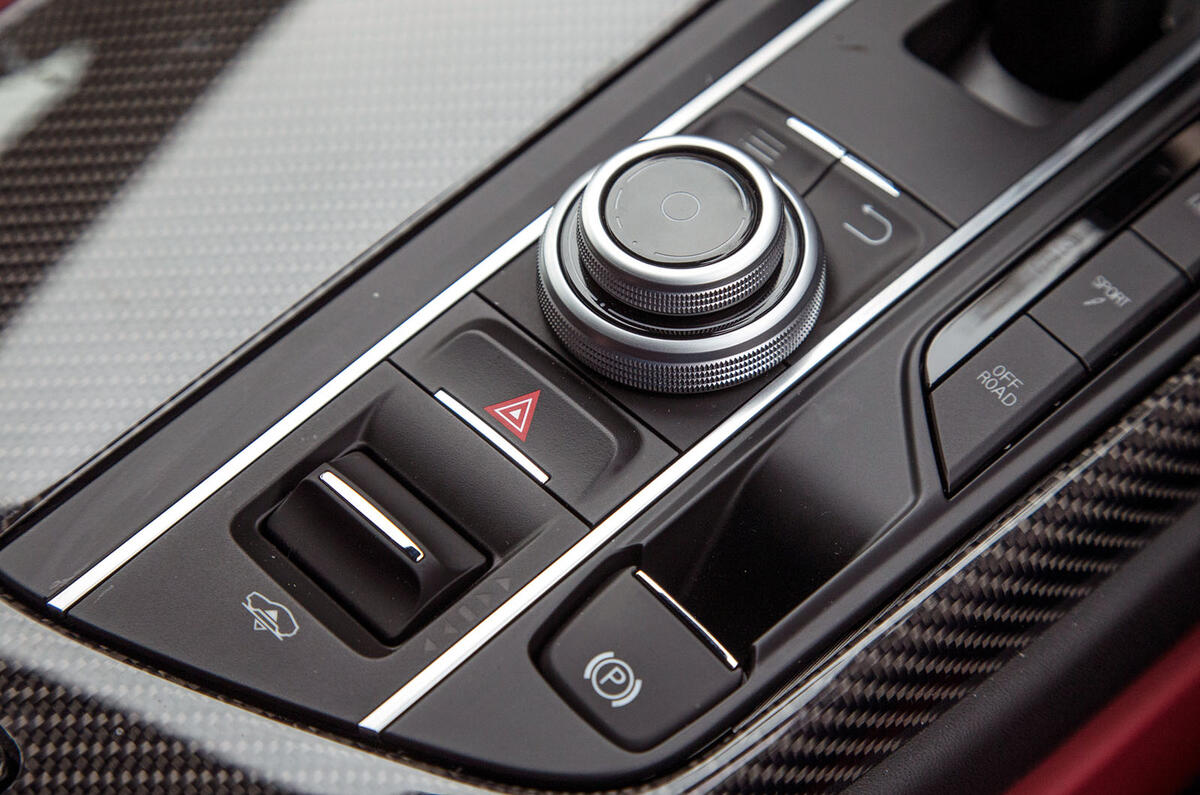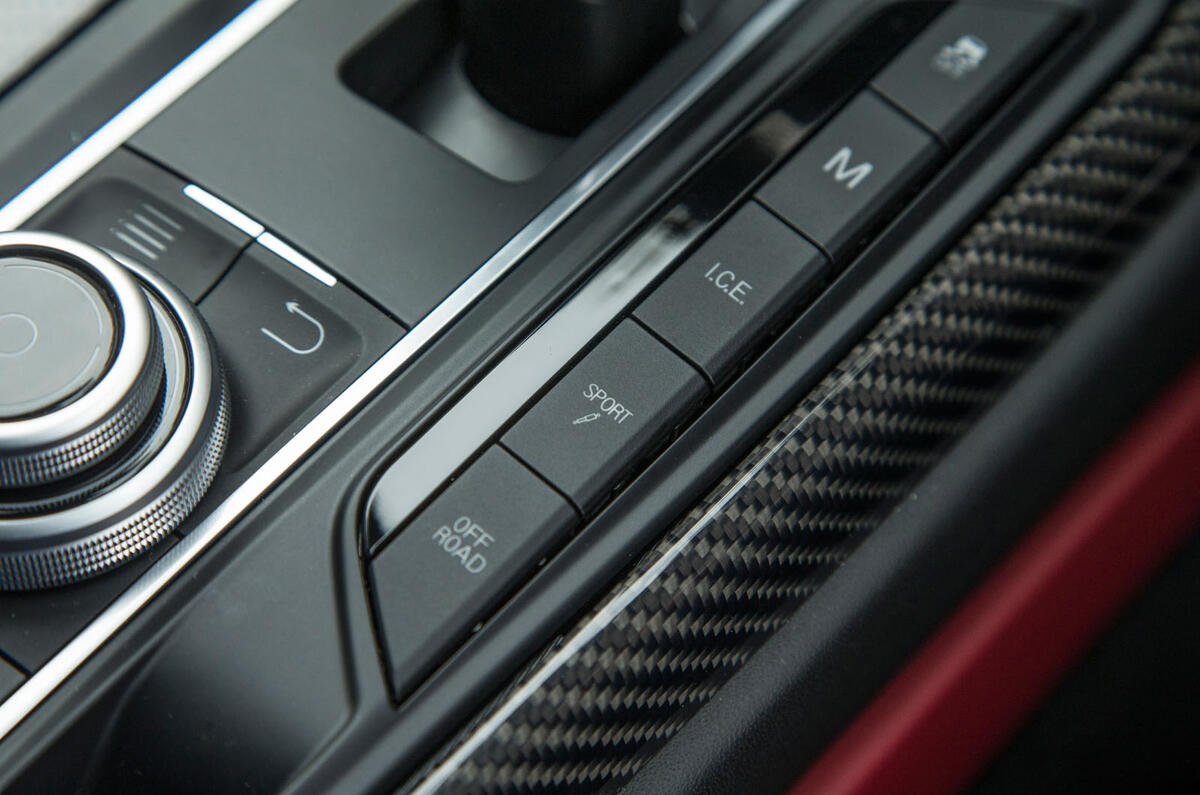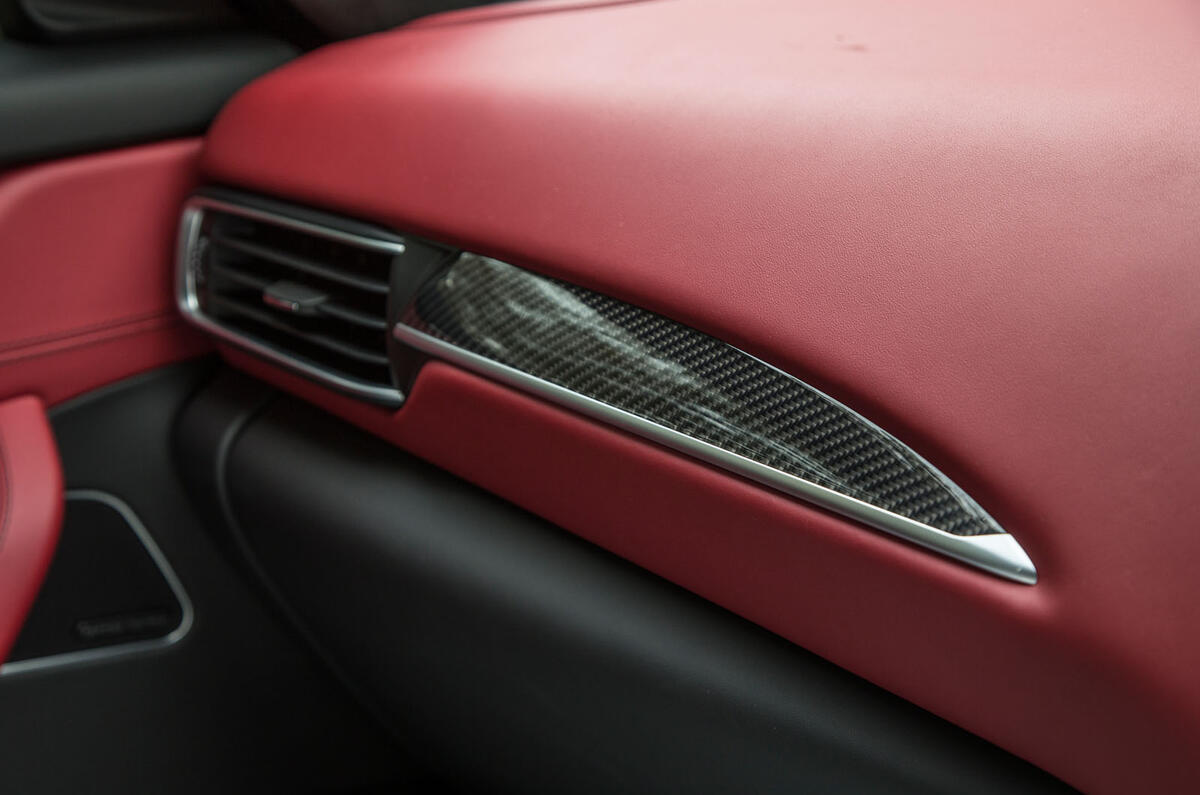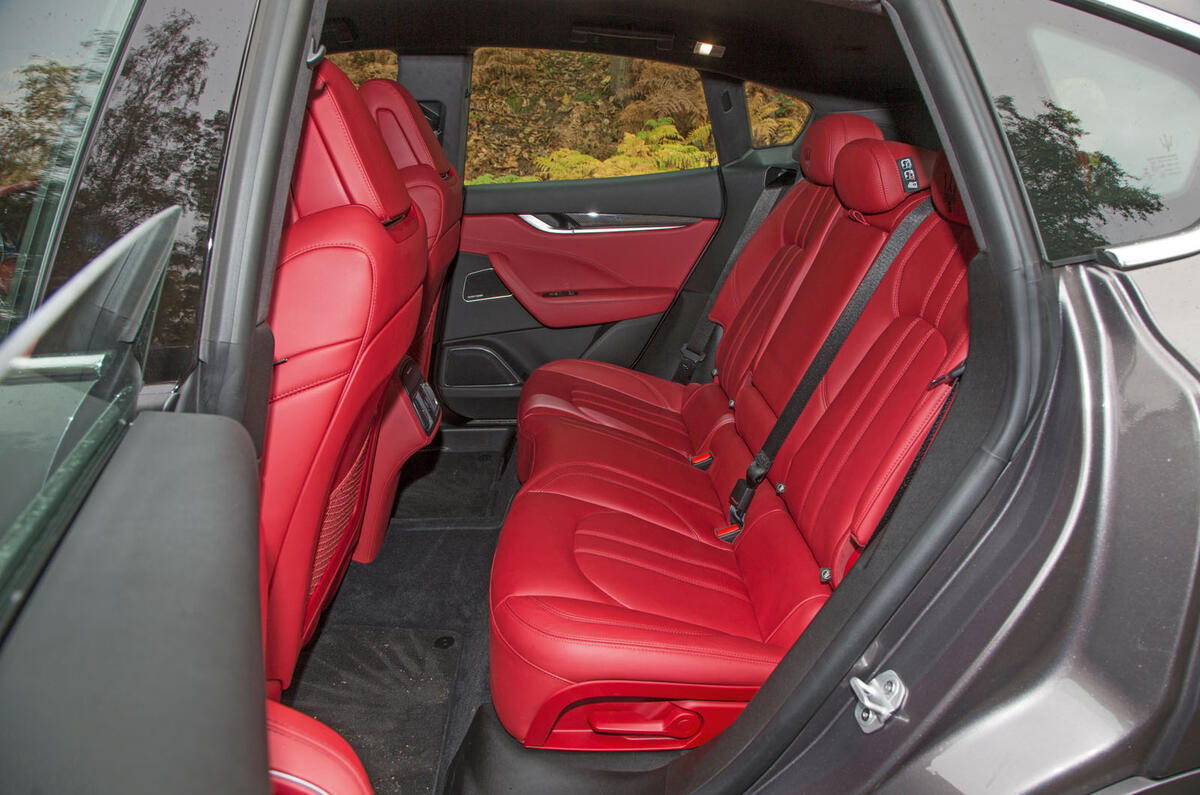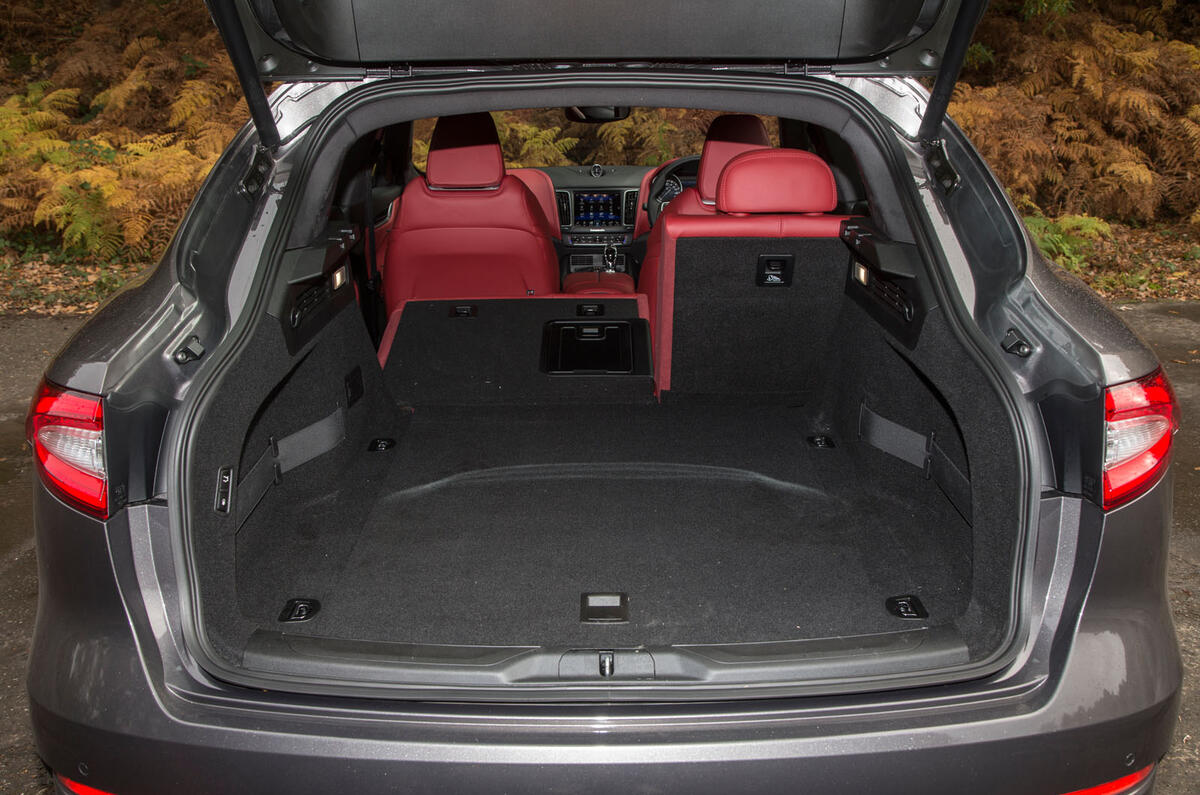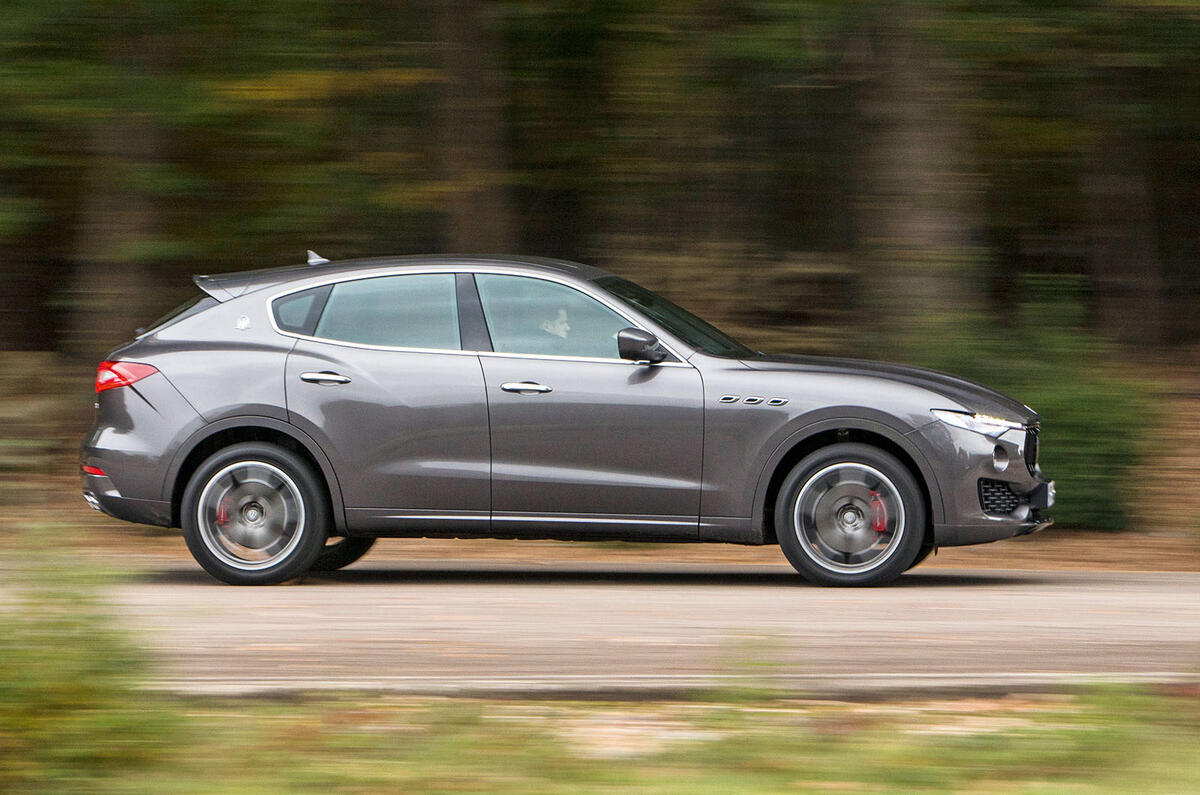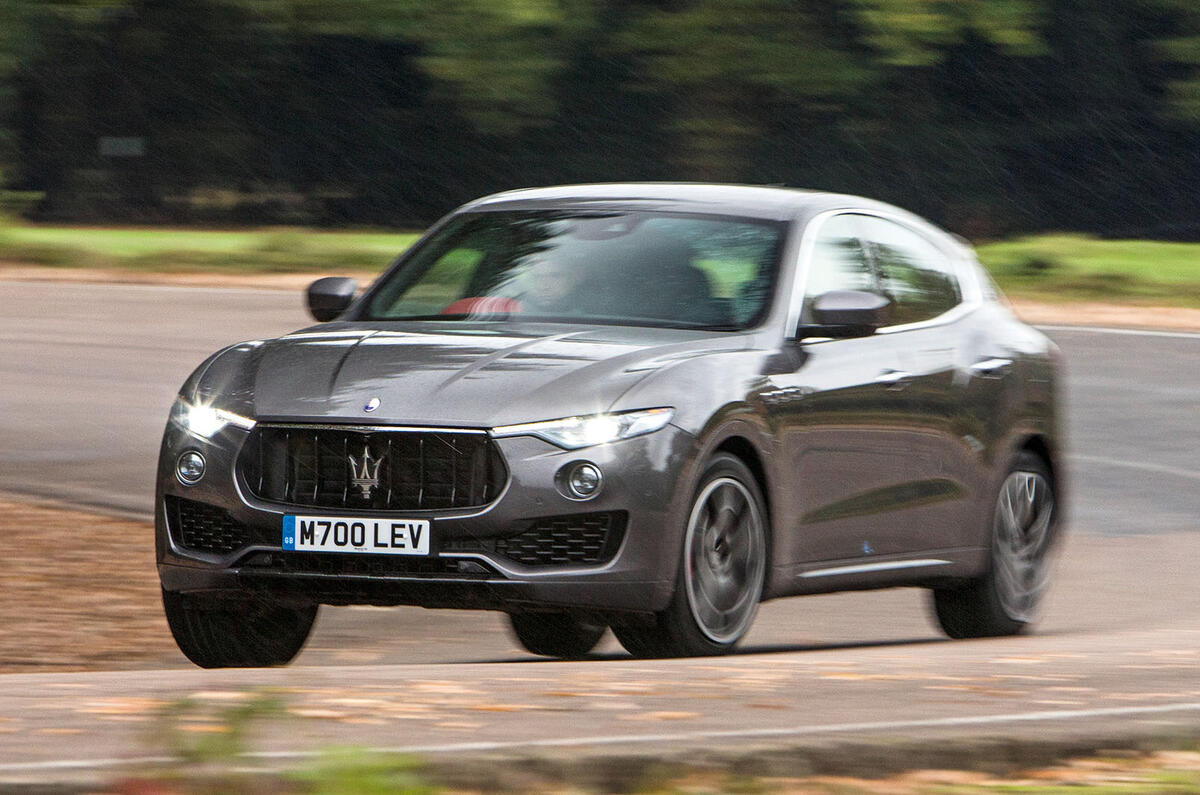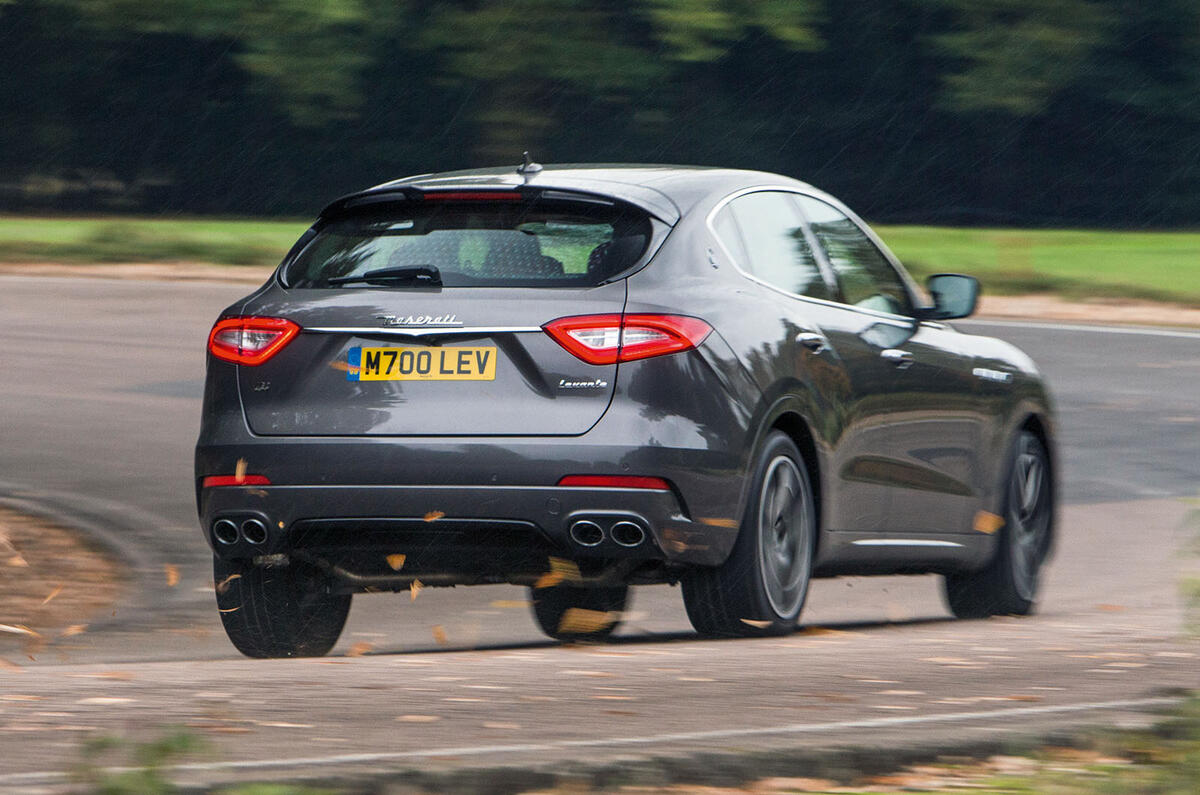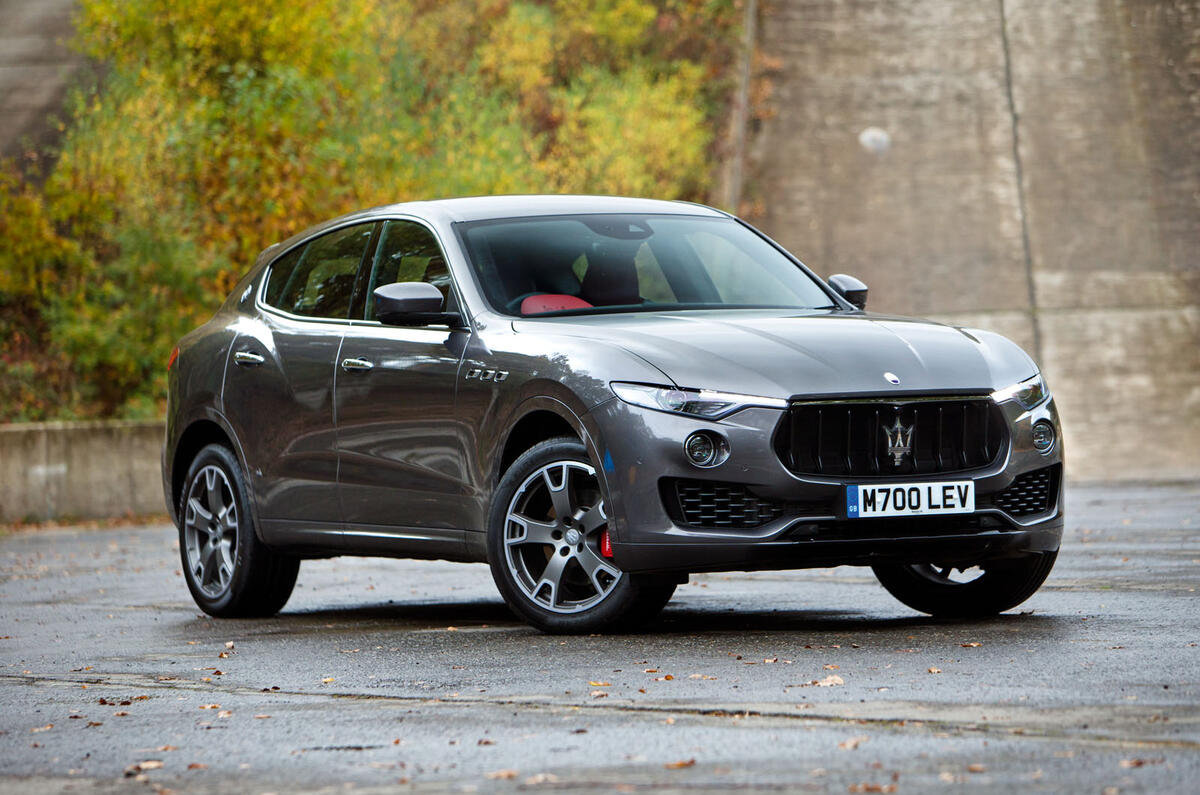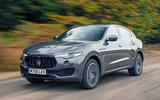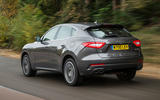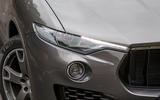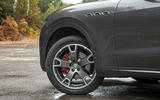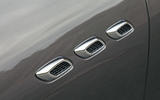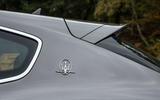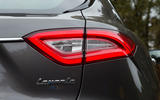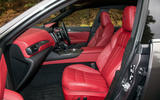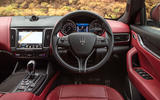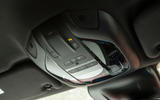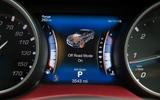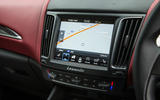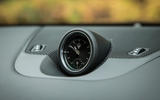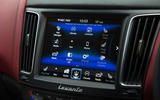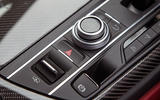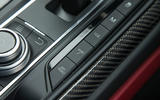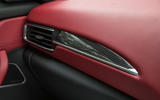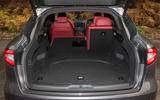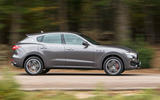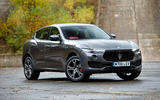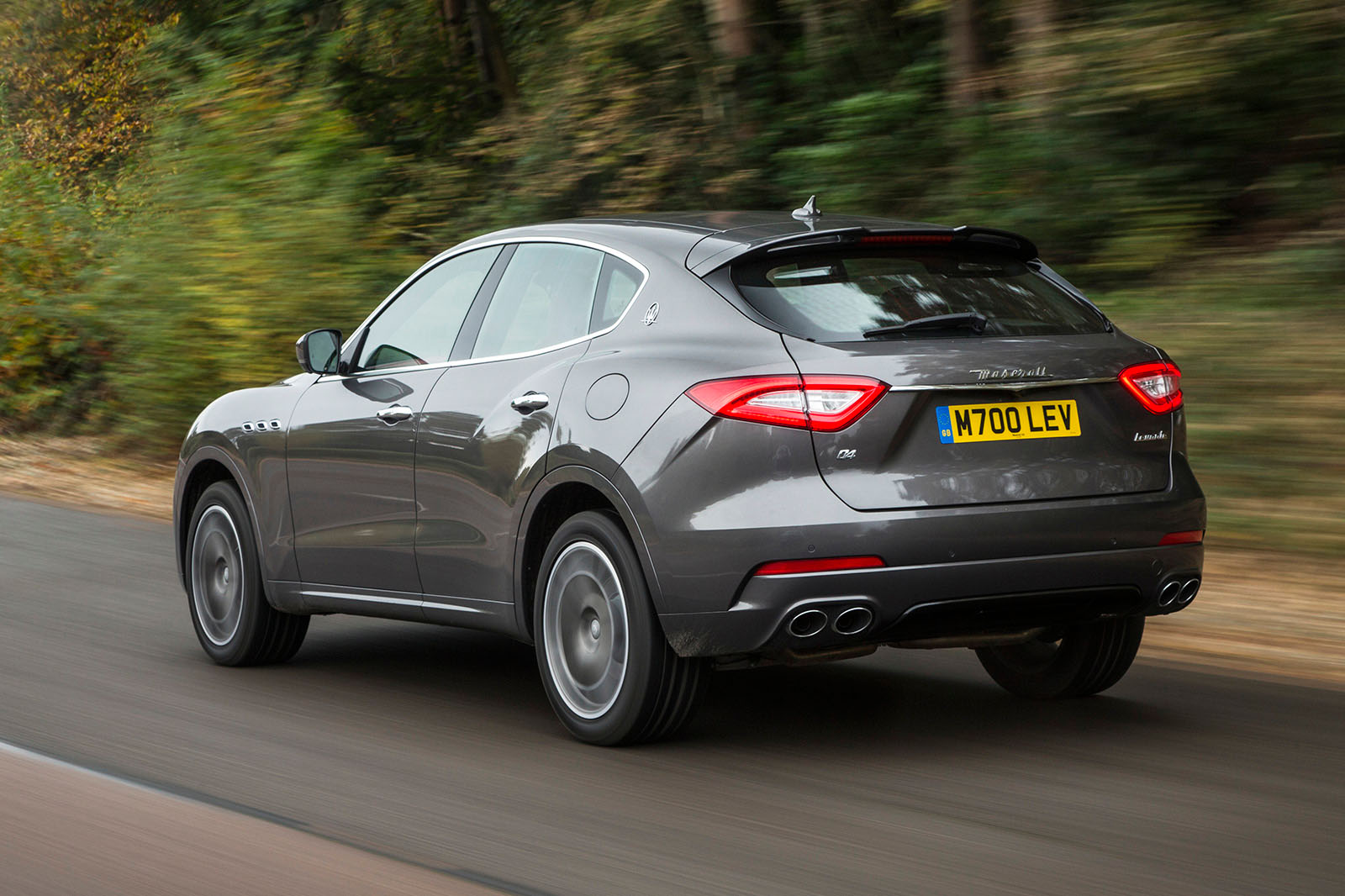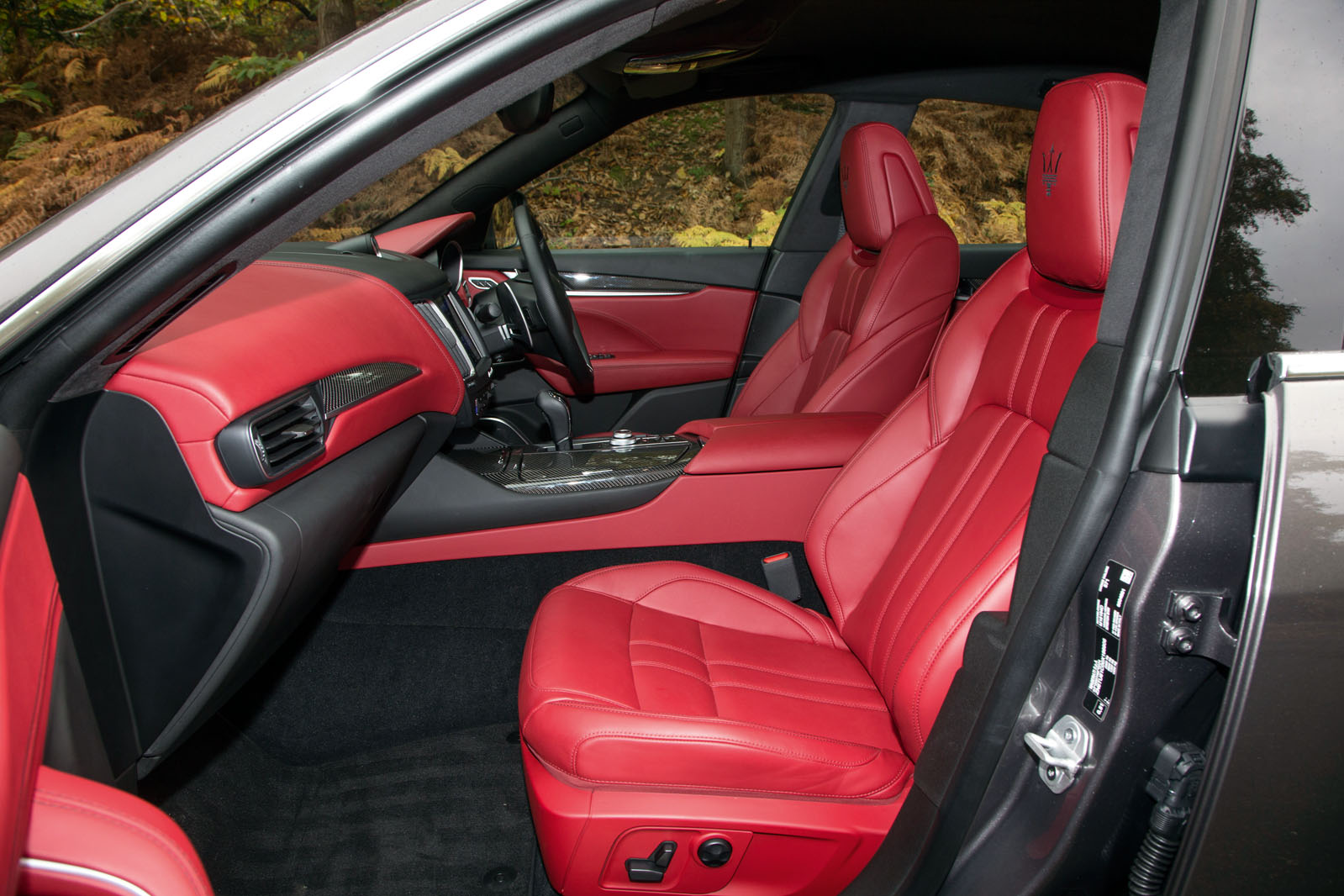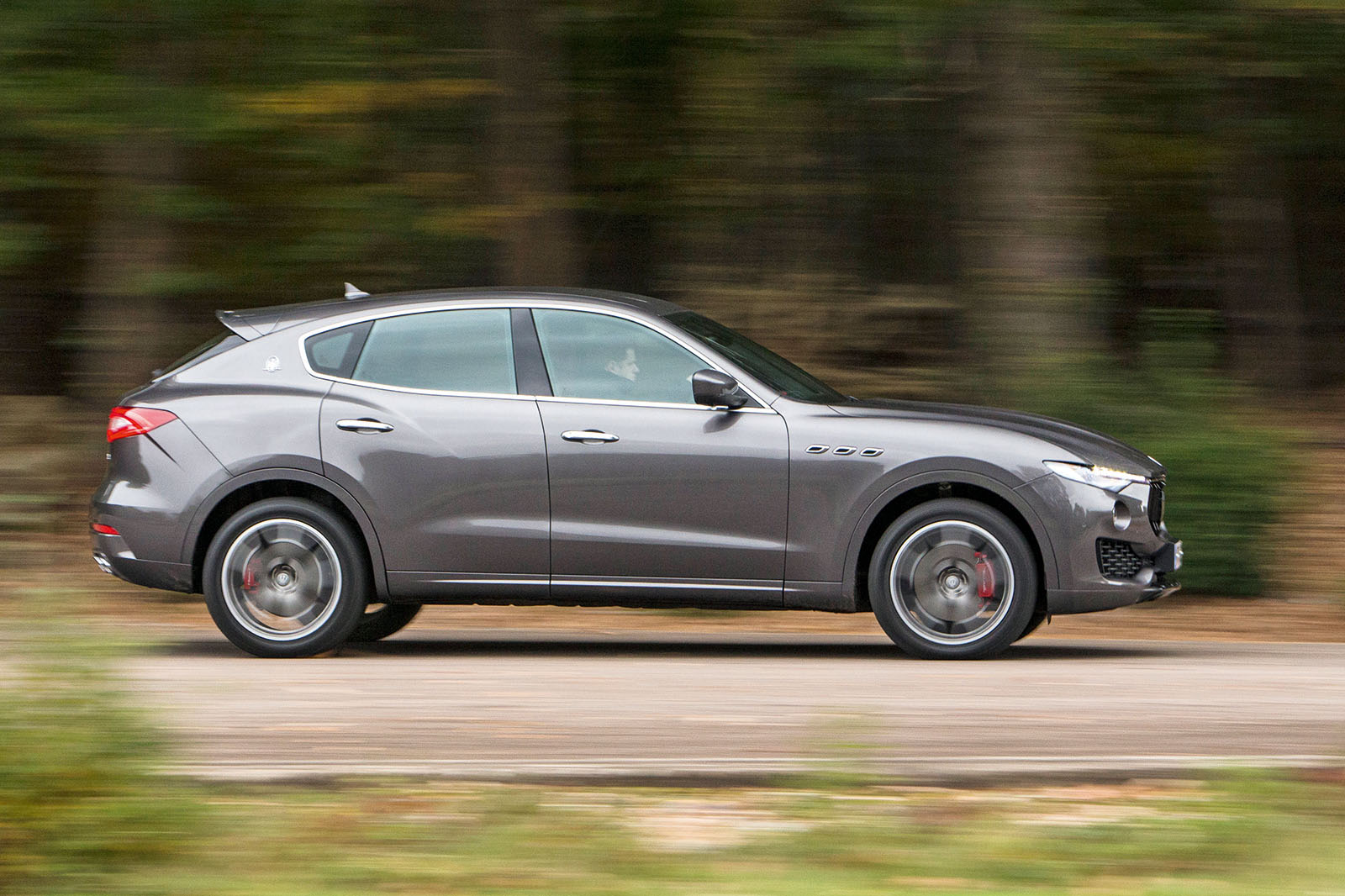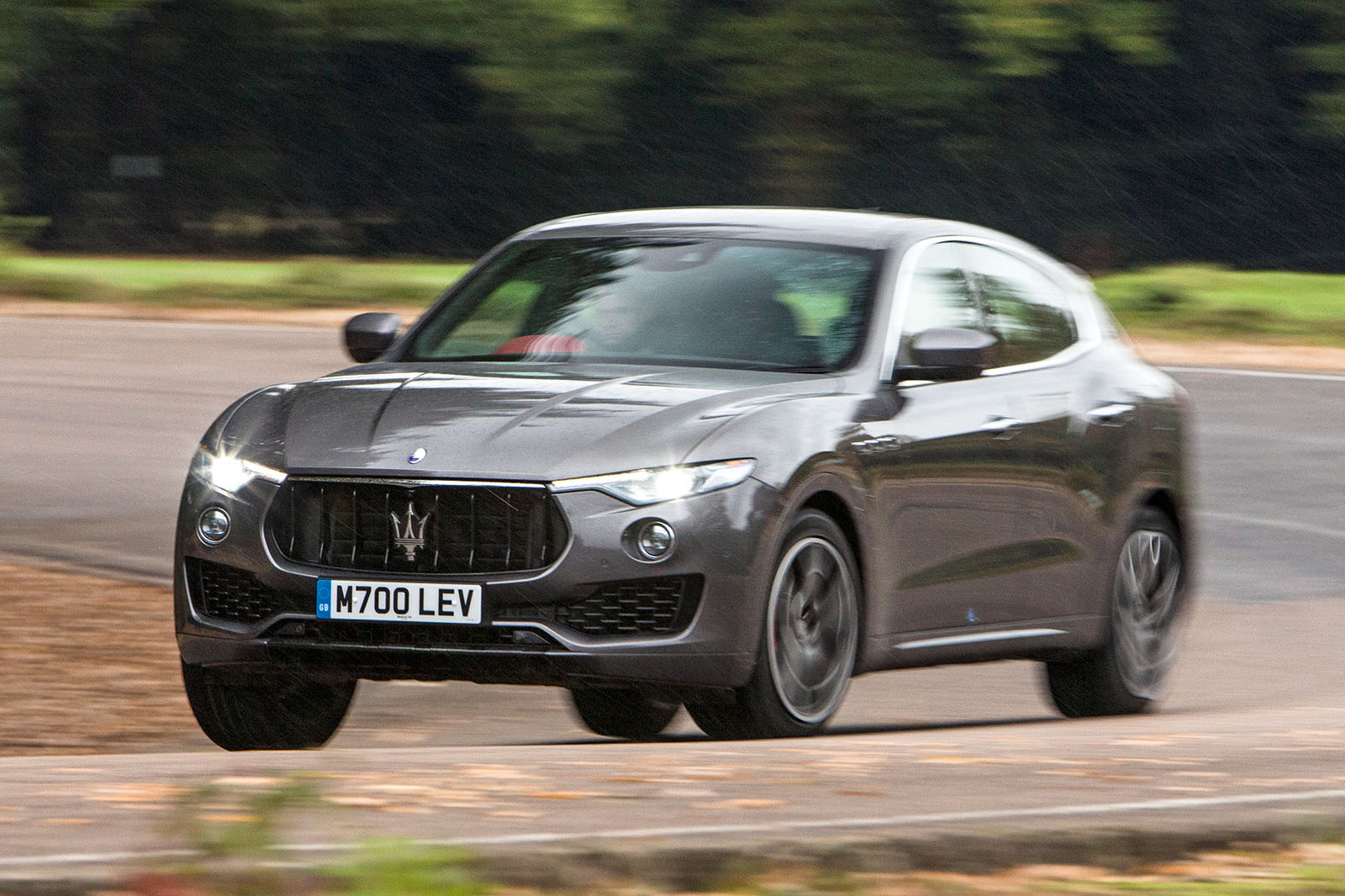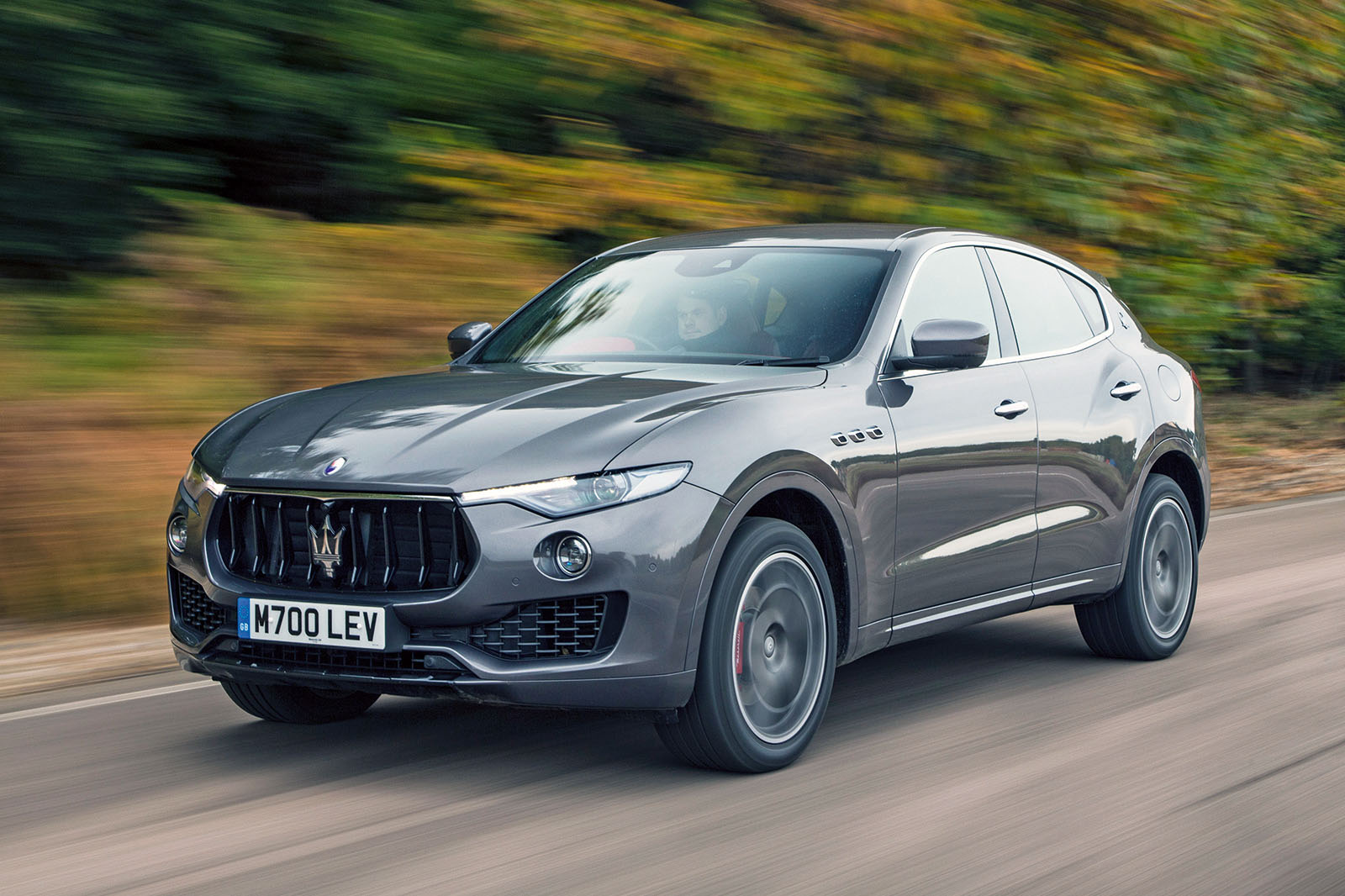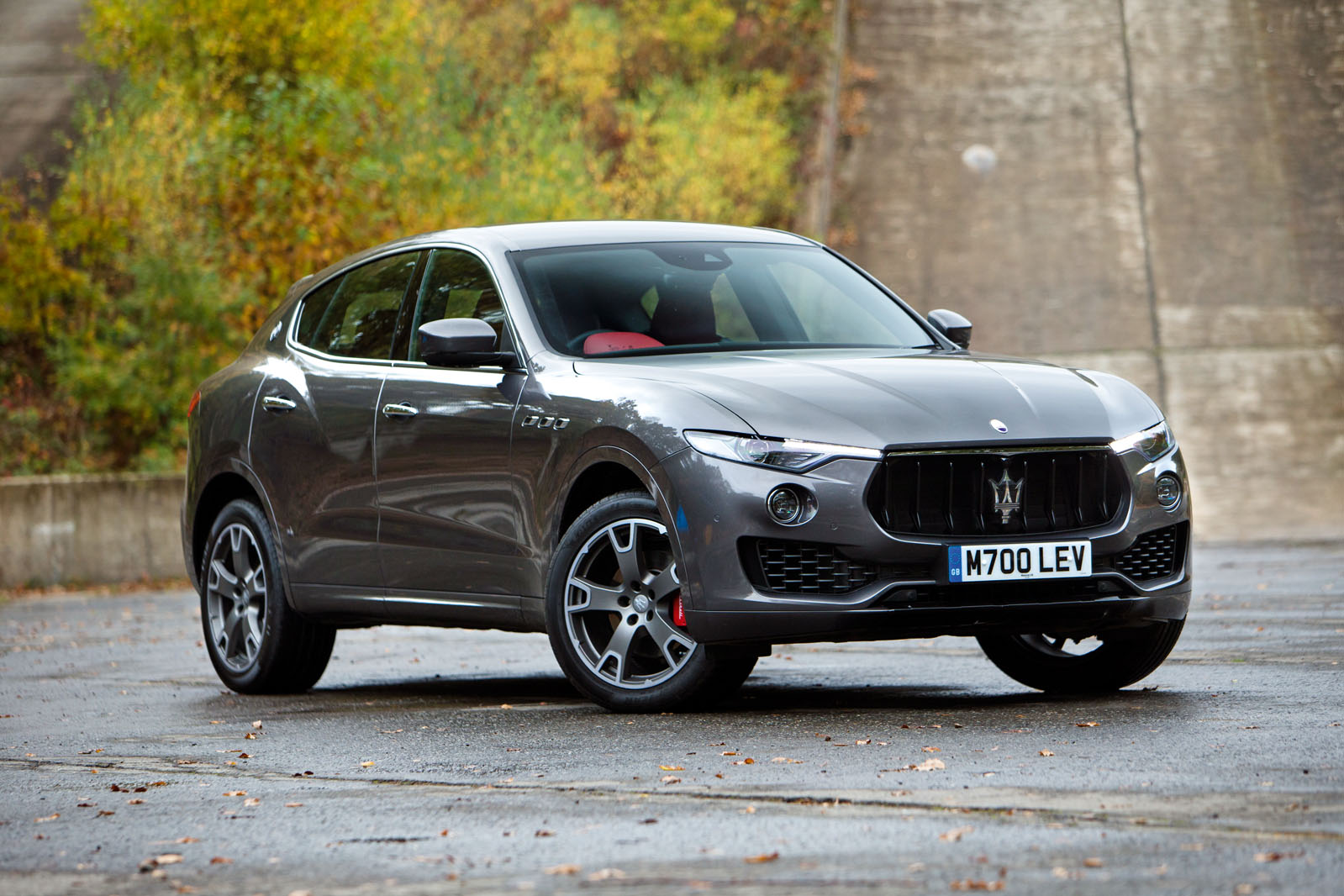The bar here is set high by the readily apparent luxury and perceived quality of the Levante’s rivals – but Maserati clears this initial hurdle with room to spare.
The car’s driving position is excellent: vaunted and commanding yet congenial and very slightly hunkered down behind the high scuttle.
Out in front is a landing strip of a bonnet; beneath you is a comfy and gently sporting seat. It’s a fine start (more Jaguar F-Pace than Porsche Cayenne) and is not immediately undone by the rest of the interior.
Anyone familiar with the Maserati Ghibli should spot the family resemblance in the swooping ‘V’ of the dash, the bold analogue instrument cluster and the broad centre console, but the Levante’s cabin is still distinctive enough for it to stand out in Maserati’s line-up.
With the application of £2650 worth of fine-grain leather, it looks the part, too, but not every surface, nor every item of switchgear, is as impeccably crafted as in Porsche’s SUV cabins. There’s cheaper plastic to find if you go looking for it – most notably in the brazenly naff clock and the Chrysler parts-bin starter button.
However, much as the moon is impossible to see when the sun is up, you’ll probably not initially notice these cheaper fixtures for the white-hot ire you’ll be directing at the car’s intransigent gear selector. Maserati apparently wants the button and lever to be operated with tea-party gentleness, which is a level of patient etiquette not common in road testers.
Consequently, finding Drive, Reverse or Park in a single movement while in a hurry is more miss than hit.
There are broader misgivings to report about the Levante’s overall packaging. This is a large SUV (and it certainly feels it on narrow roads), yet its innards don’t seem to yield up enough interior volume to appropriately reflect the space being taken up by the car on the outside.
There’s room enough for four adults, but you get the distinct impression that three school-age children sitting across the rear bench would feel a bit cramped. The load bay isn’t extravagantly roomy, either, due mainly to a lack of decent height. Maserati claims 580 litres of load space, or around 70 litres less than you’d get in the smaller F-Pace, which feels no less spacious inside.
The main focal point of the Levante’s dashboard is the 8.4in touchscreen of its all-new infotainment system. Maserati is not the only car maker to fall into the trap of presenting its multimedia options as if on a tablet, but it might be the only one to have pursued the idea so diligently.
The problem with the home screen layout — which appears like a simplified version of that which you might see on an iPad — is that you need to be able to pick out a function within half a second so your eyes can be returned safely to the road.
Because of that criteria, having 19 options all displayed in very similar, same-colour graphics is plainly less than ideal. Over time, of course, you’d memorise the position of each sub-menu, but over a few days we were still stabbing away in a half-panic.
Otherwise, the system is obliging enough, and while the sat-nav is a notch or two less well developed than those of its premium rivals, there’s a solid choice of stereo equipment, including a Bowers & Wilkins Quantum Logic surround system with Kevlar speakers and a 1280W amp.
Those considering a Levante are given three choices when choosing a trim. The first decision is whether to opt for the diesel or petrol variant, and then to decide whether to keep the car standard, which comes with a wealth of standard equipment. Or opt for the luxury-biased GranLusso trim or the sportier looking GranSport trim.


